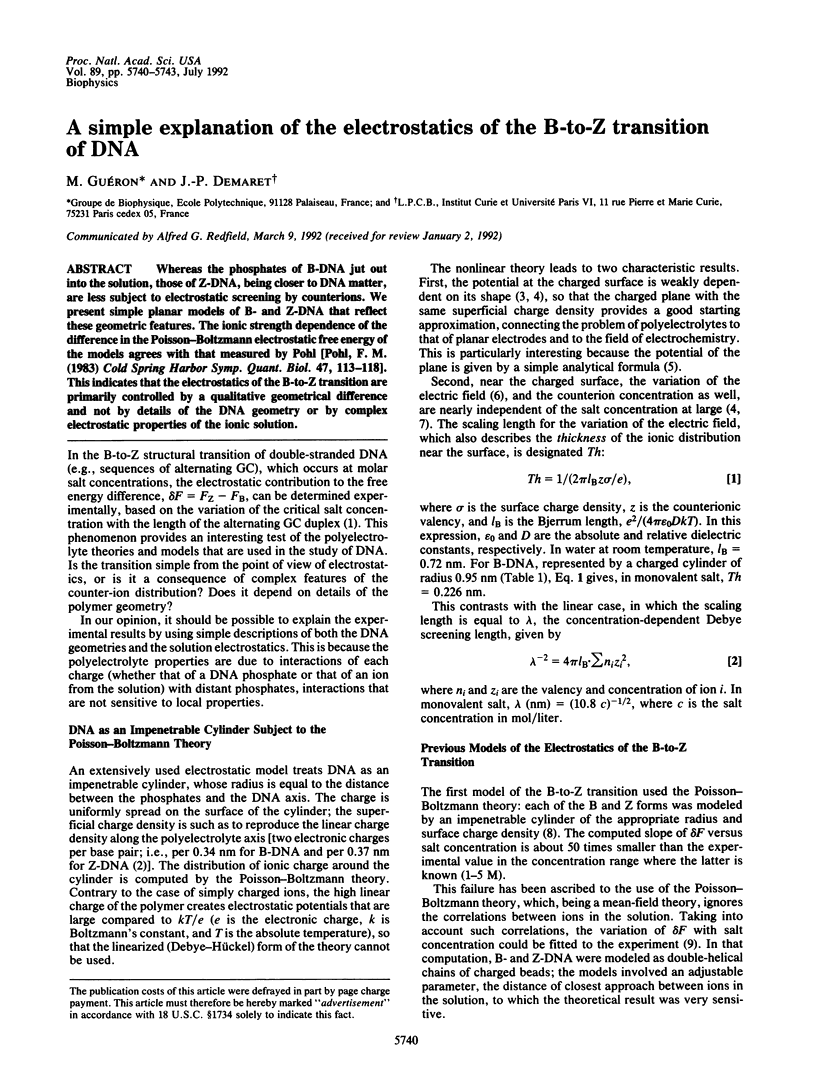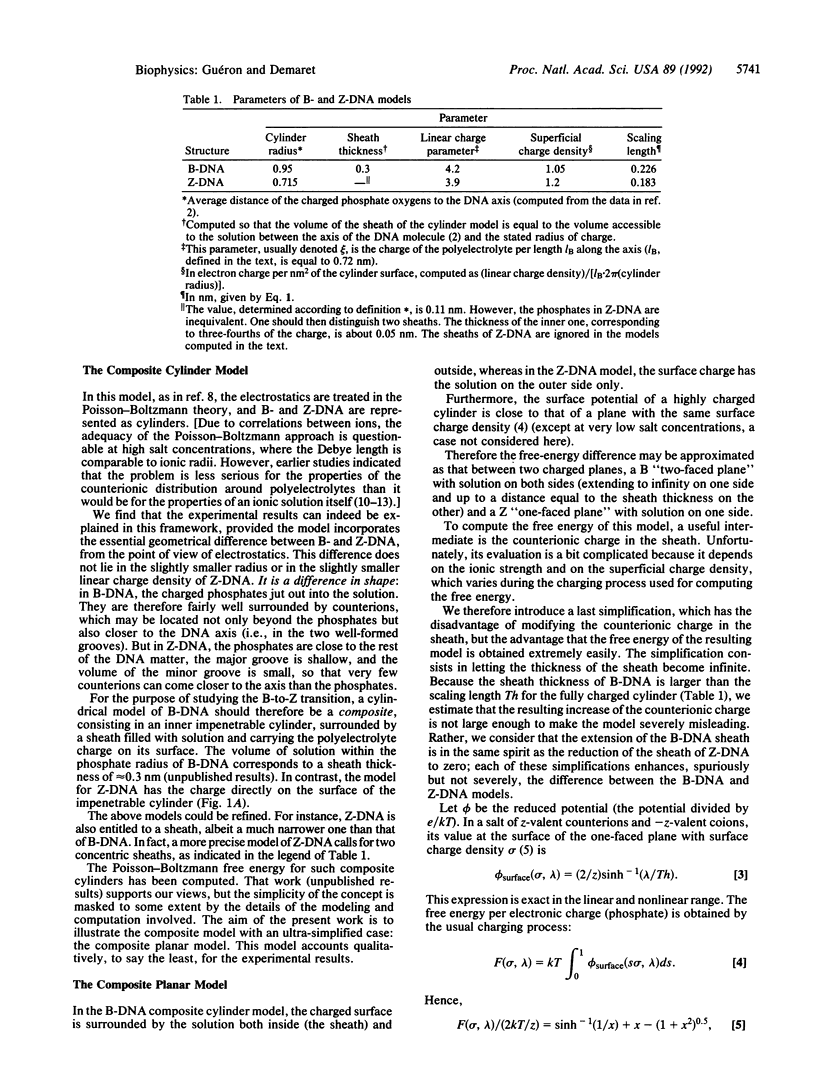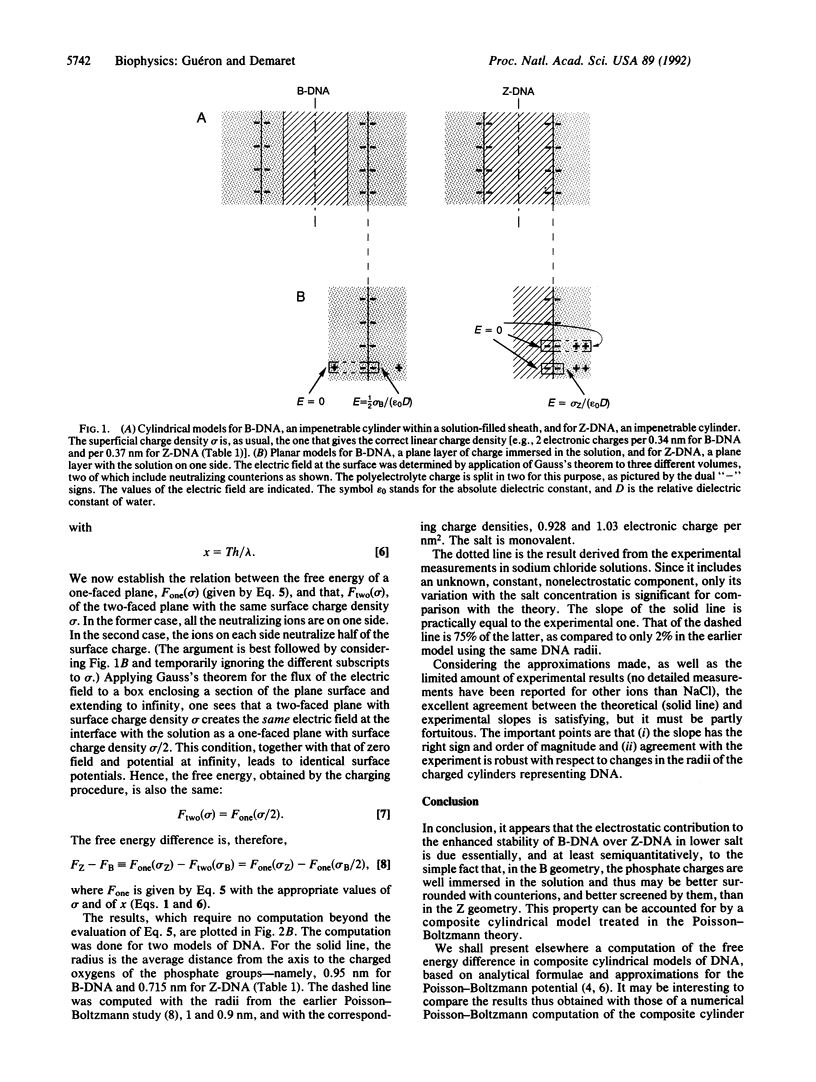Abstract
Whereas the phosphates of B-DNA jut out into the solution, those of Z-DNA, being closer to DNA matter, are less subject to electrostatic screening by counterions. We present simple planar models of B- and Z-DNA that reflect these geometric features. The ionic strength dependence of the difference in the Poisson-Boltzmann electrostatic free energy of the models agrees with that measured by Pohl [Pohl, F. M. (1983) Cold Spring Harbor Symp. Quant. Biol. 47, 113-118]. This indicates that the electrostatics of the B-to-Z transition are primarily controlled by a qualitative geometrical difference and not by details of the DNA geometry or by complex electrostatic properties of the ionic solution.
Full text
PDF



Selected References
These references are in PubMed. This may not be the complete list of references from this article.
- Frank-Kamenetskii M. D., Lukashin A. V., Anshelevich V. V. Application of polyelectrolyte theory to the study of the B-Z transition in DNA (1). J Biomol Struct Dyn. 1985 Aug;3(1):35–42. doi: 10.1080/07391102.1985.10508396. [DOI] [PubMed] [Google Scholar]
- Pohl F. M. Salt-induced transition between two double-helical forms of oligo (dC-dG). Cold Spring Harb Symp Quant Biol. 1983;47(Pt 1):113–117. doi: 10.1101/sqb.1983.047.01.014. [DOI] [PubMed] [Google Scholar]
- Soumpasis D. M. Statistical mechanics of the B----Z transition of DNA: contribution of diffuse ionic interactions. Proc Natl Acad Sci U S A. 1984 Aug;81(16):5116–5120. doi: 10.1073/pnas.81.16.5116. [DOI] [PMC free article] [PubMed] [Google Scholar]


